Look/SRM Exakt power meter review
Are Look and SRM a power couple or is this a marriage of convenience?

Look and SRM claim the same accuracy for Exakt as SRM’s crank-based power meters. That might be true if you get the physical set-up completely correct. But Exakt is a pernickety beast and if something’s not quite right, your results will be skewed. Coupled to the high price, it’s a difficult option to recommend.
-
+
Look and feel of Look Kéo pedals
-
+
Not much added weight
-
+
Sleekly integrated, weatherproof design
- +
-
-
Awkward set-up process
-
-
Sometimes inconsistent data
- -
You can trust Cycling Weekly.

Look paired up last year with power meter guru SRM to launch the Exakt pedal-based power meter.
SRM was the pioneer of cycling power measurement, but had previously only offered crank-based power meters. It has a large presence in the pro peloton and a reputation for accuracy, which Look and SRM have aimed to port to Exakt.
The Look/SRM Exakt power meter comes in a nice box, complete with the tools you need to set it up. There’s also an extra-long USB cable which plugs into a charging adapter. The adapter, in turn, makes a magnetic connection to the charging port on the inside end of each pedal and powers up the internal battery.
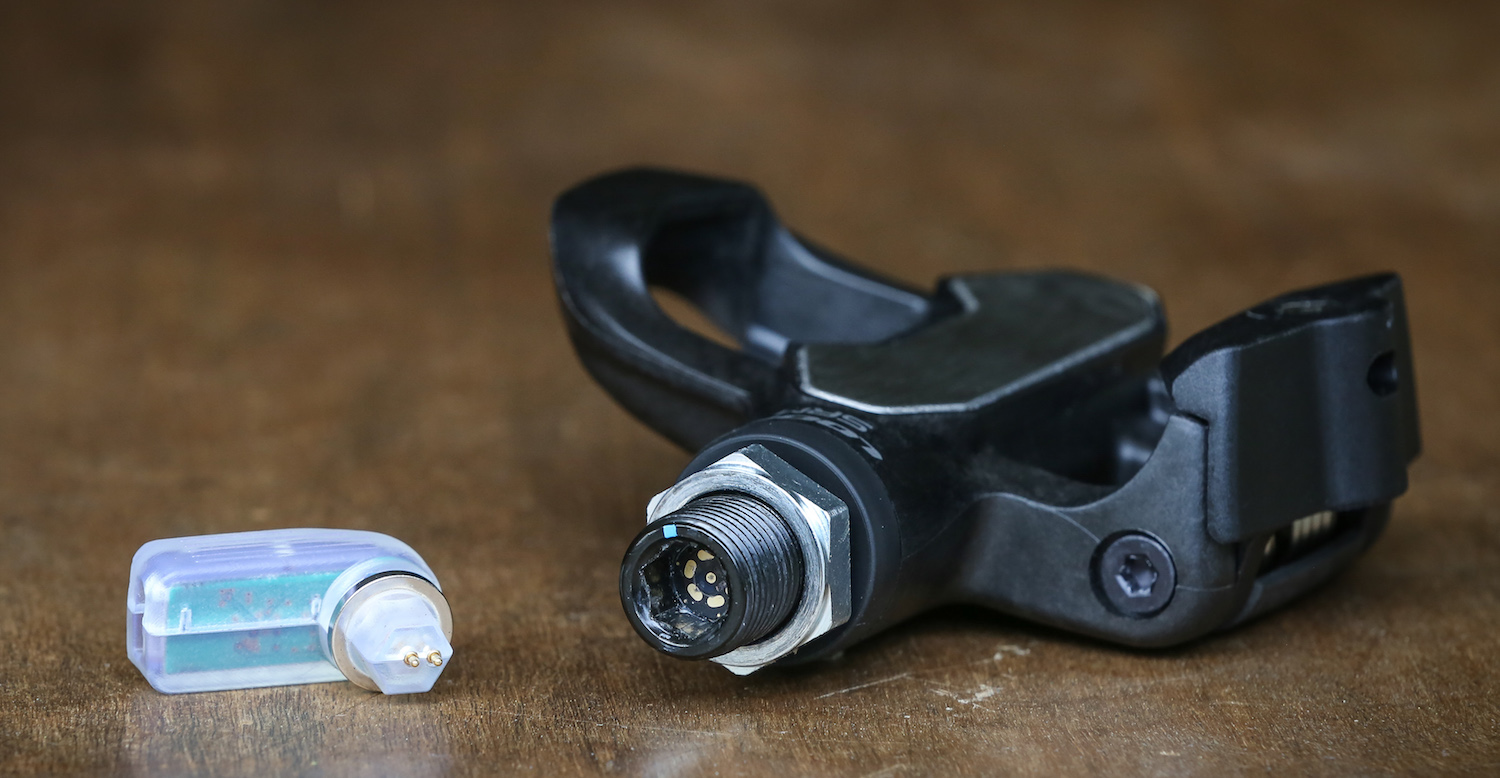
Look/SRM claim a 100 hour battery life. I got less than that, but it was still enough for multiple rides between charges.
It’s a neat system that does away with the need that some power meters have to swap out coin cells and means that Exakt is sealed against the elements. Look says that it’s IPX7 waterproof. I didn’t have the joy of riding on a wet day, but with Look’s expertise in pedals, there’s no reason to believe that its double seals would not be effective.
Set up process
The set-up process for the Exakt power meter is fiddly, although it’s guided by an easy to use app which runs on Android or iOS.
Turning the pedals switches them on; an indicator LED in the spindle end of each pedal showing that it’s powered up. Then the app will discover the pedals via Bluetooth. This process usually works smoothly, although on occasion I had to close the app and restart it for one or other pedal to be paired. The app also gives you battery status info for each pedal.
The latest race content, interviews, features, reviews and expert buying guides, direct to your inbox!
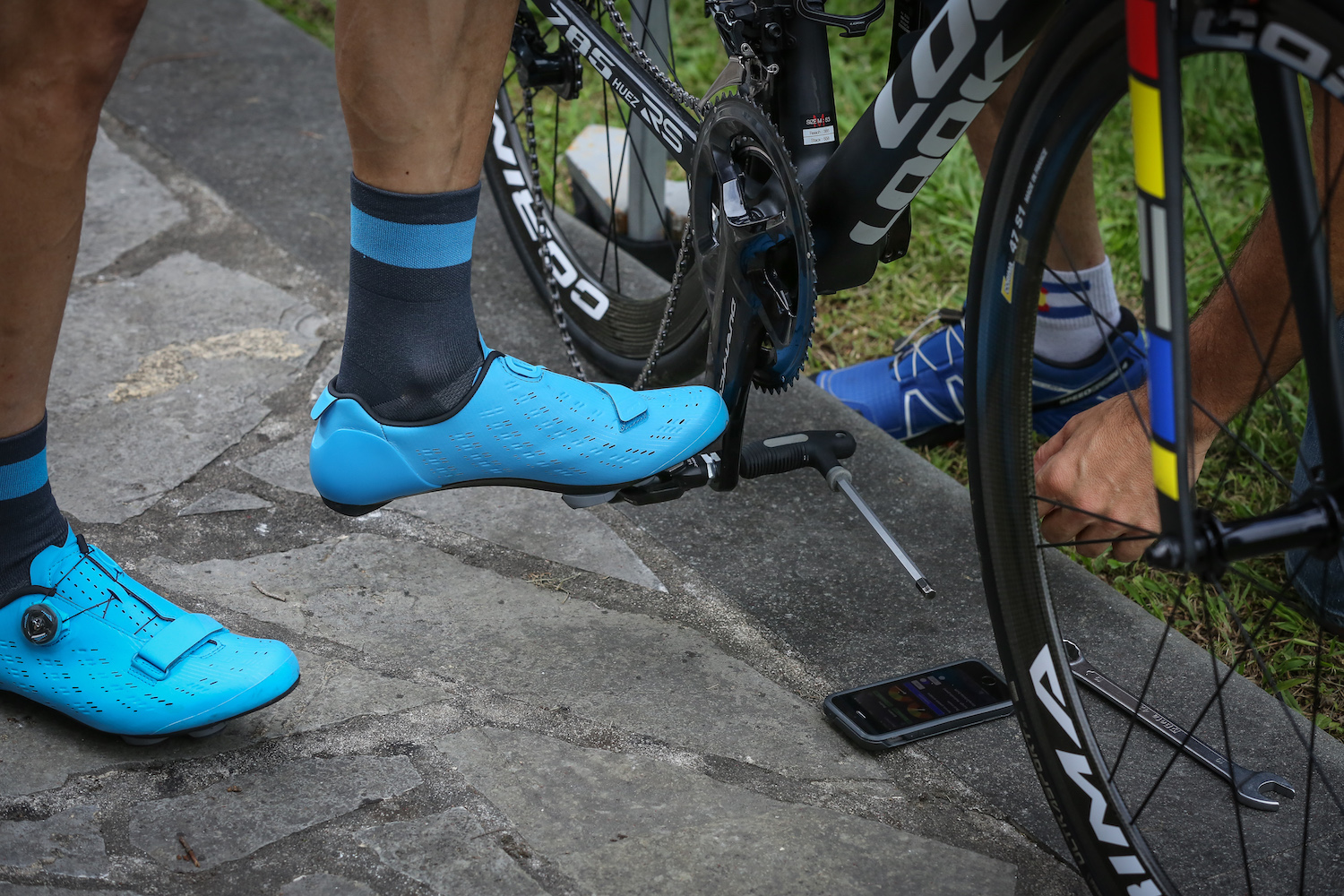
Next you need to line up a blue dot on the inside end of the pedal spindle so that it points towards the centre of the crank. Then using the app and pressing down on the pedal, while all the time keeping the bike vertical, you need to align an arrow so that it points to the middle of a dial on the phone display.
Next, you need to tighten a lock nut to 35Nm, without moving the spindle in the crank. There’s a strangely shaped allen key and a pedal spanner provided to help you with this. It's unlikely that the average rider will have one of the best torque wrenches for bikes to ensure that they've got the torque correct and any movement of the spindle in the crank can throw off the power measurement - something that you need to check for with the app. The remedy for incorrect alignment, as indicated by the app, is to repeat the whole alignment and tightening process.
Then the procedure needs to be replicated for the other pedal.
I just ended up aiming for “pretty tight”, but differences between how tight I got the left and right pedal may explain inconsistencies in left:right power balance readings I found when I started to ride.
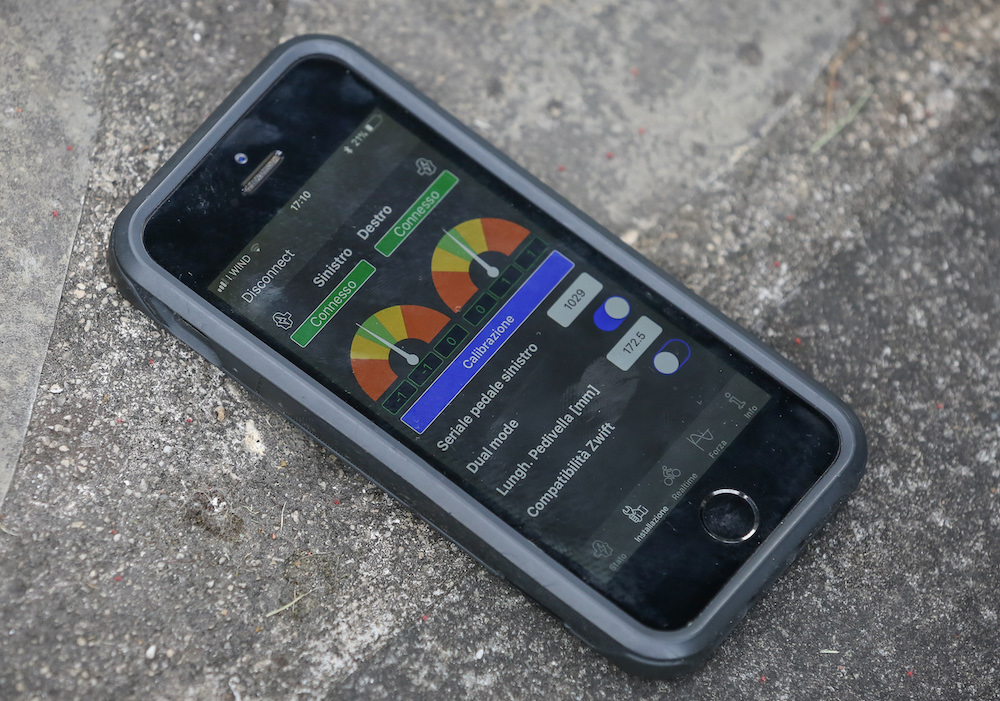
The first generation Garmin Vector power meter pedals had to be torqued to a precise 40Nm. Garmin’s latest Vector 3 has escaped this constraint. Although you can get readings if you haven’t got the pedals correctly aligned, Look says that you need to go through the alignment process to get the highest accuracy.
Look and SRM say that other makers have avoided the precision set-up process by using a power estimation algorithm, whereas the Exakt power meter relies more directly on power measurement at the pedal.
Regardless of whether this is the case, the awkward set-up process means that swapping Exakt between bikes is not as easy as for most of its competitors, thus obviating one of the main advantages of pedal-based power measurement. On the other hand, it’s still a lot easier than installing a crank based power meter, it will work with whatever chainset you have and Exakt is still significantly cheaper and more flexible than SRM’s crank based options.
Exakt in operation
Exakt pairs up easily with non-SRM head units, using either ANT+ or Bluetooth, although you don’t get the full range of functionality supplied by SRM’s own PowerControl 8, which I also used as part of the package.
I found that swapping Exakt between different bikes, in some cases I got non-even left:right balance readings of up to 30:70. This might be due to my legs not working as hard as each other, but in some cases the bias was towards the left leg and others towards the right. It seems more likely that it’s due to differences in how tightly I had torqued the two pedals. Look says that you should check the alignment regularly with the app to ensure that everything is still set up right.
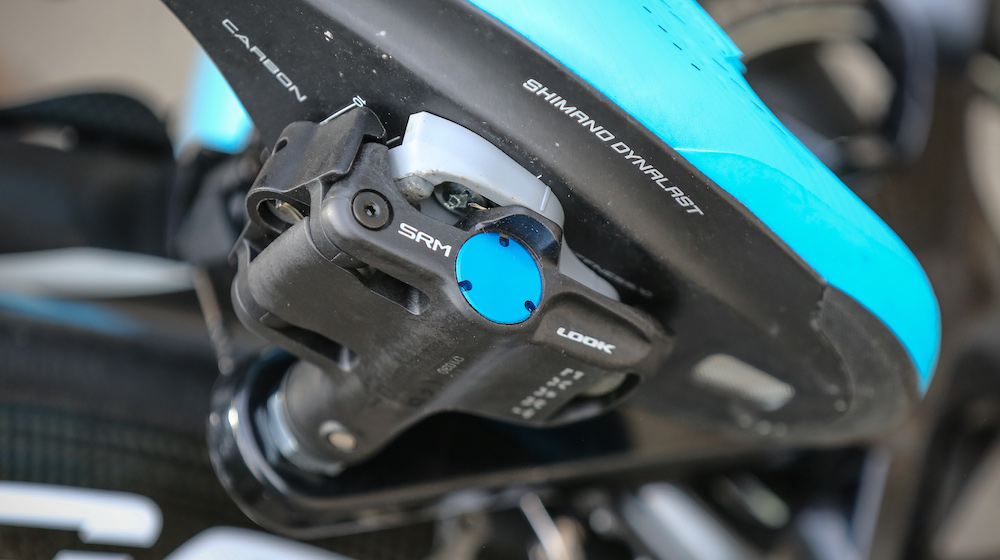
Being based on Look’s Kéo pedals, the cleat interface offered by Exakt is as secure as you’d expect and you have the option to increase or reduce the release tension. Plus, you can select standard Look cleats with different amounts of float, to suit your pedalling style.
With all the electronics hidden in the pedal spindle, the Exakt power meter is low profile. The pedal spindle extends under its platform, but otherwise there’s little except the blue end cap to distinguish it from a standard set of Kéo pedals. Exakt is also impressively light at 314g a pair, as against the Kéo 2 Max Carbon pedals’ 252g, so the electronics and batteries are only adding around 60g of additional weight.
SRM head unit
We’ve had the whole package in for test, including the SRM PowerControl 8 head unit. It’s the sleek-looking display you see on many pros’ bikes. UK importer ZyroFisher doesn’t offer the bundle including the head unit, although you can buy the complete package or the separate head unit from the Exaktpower website.
At £780, the head unit is a pricey piece of kit and a bit of a curate’s egg. The large display is easy to view and you can parameterise the screens displayed. It offers you data like torque effectiveness that you can’t get from Exakt otherwise, although other metrics like normalised power, training stress score and intensity factor can be displayed on other head units.
But there’s no mapping or navigation functionality in the PowerControl 8. Being aimed at the pros, they’re likely to know – or not care – where they’re going. There is a gradient profile, so you can see how much and how fast you’ve climbed. And there is GPS too. But you only get to see your route after you get back and have uploaded the data to your home computer.
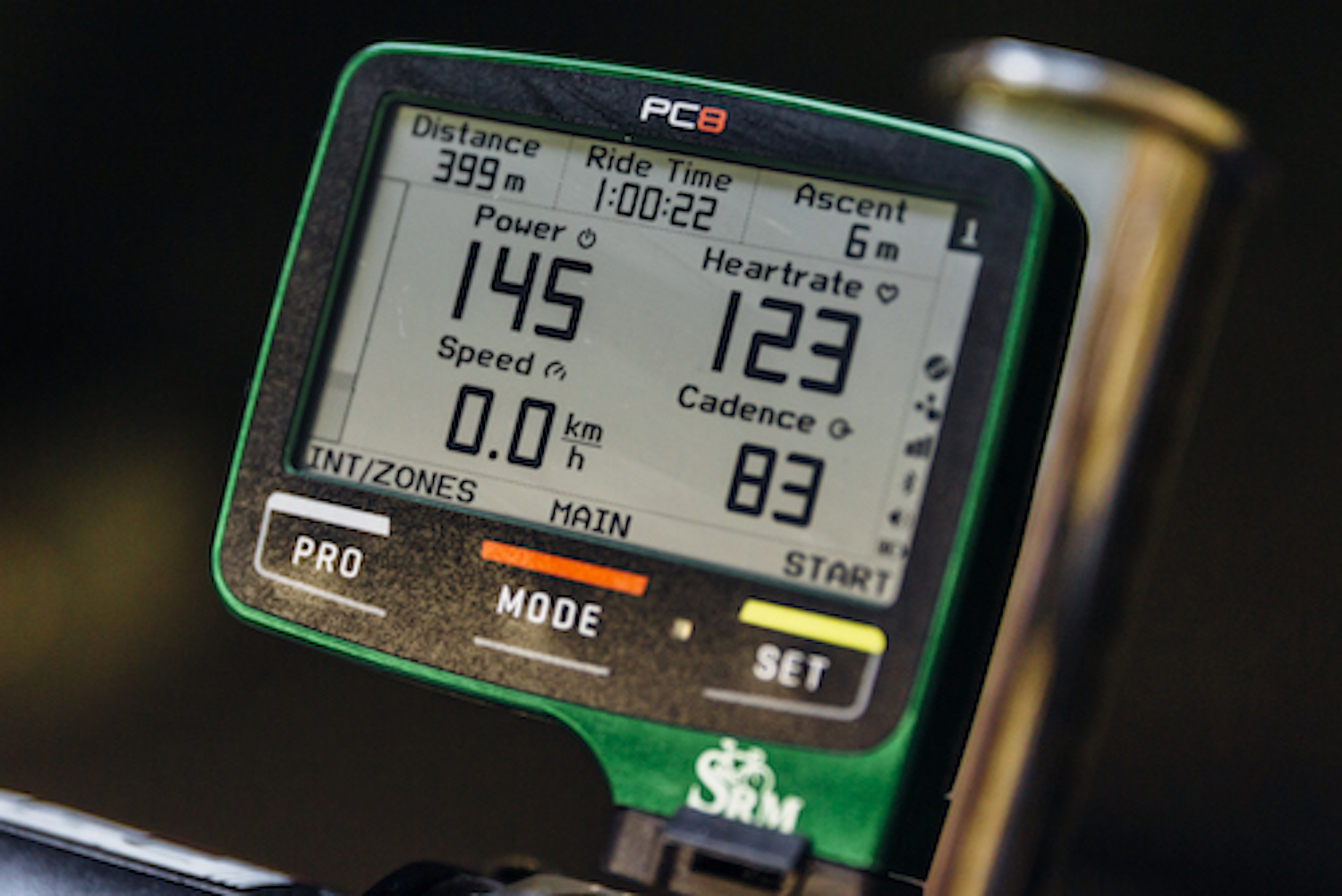
Upload uses a custom USB cable, which has a magnetic connector that attaches neatly to the back of the head unit. It works well and also charges the head unit, which has an always-on screen, although this doesn’t drain the battery excessively.
>>> Buy now: Exakt power meter from Exaktpower.com
I found that the GPS was slow to pick up a signal – you need to turn the unit on a few minutes before you start riding or it will miss the first few miles. And the GPS trace isn’t very accurate; I found that its recorded distance was consistently shorter than that measured by the normally accurate Polar V800. Comparing traces, there was significant drift for the SRM, particularly under tree cover, and on one occasion there was a dropped trace mid-ride too.
SRM analysis software and interfaces
SRM’s analysis software is also a bit clunky. It took me a bit of time to navigate my way around the Windows-based SRMX app (it’s available for Macs too). The user interface isn’t very intuitive and you end up with a set of windows open on a PC. The Critical Power Curve graph is useful and interesting, but many of the other display options left me scratching my head as to what they were telling me.
>>> Best power meters 2019
But you can set SRMX up to link automatically to your Strava account or training programmes including Training Peaks, with one click all that’s then required to sync your rides. I found it easier to use Strava to review my data than SRMX.
As well as the £1280 dual sided power meter tested, there’s the £730 option of single sided power measurement. This uses just the right pedal and doubles up the power measured there. So of course, you don’t get the left:right balance info, but the set-up process should be a lot easier and you can buy a left side power meter pedal to upgrade your measurement at a later date.
Paul started writing for Cycling Weekly in 2015, covering cycling tech, new bikes and product testing. Since then, he’s reviewed hundreds of bikes and thousands of other pieces of cycling equipment for the magazine and the Cycling Weekly website.
He’s been cycling for a lot longer than that though and his travels by bike have taken him all around Europe and to California. He’s been riding gravel since before gravel bikes existed too, riding a cyclocross bike through the Chilterns and along the South Downs.
